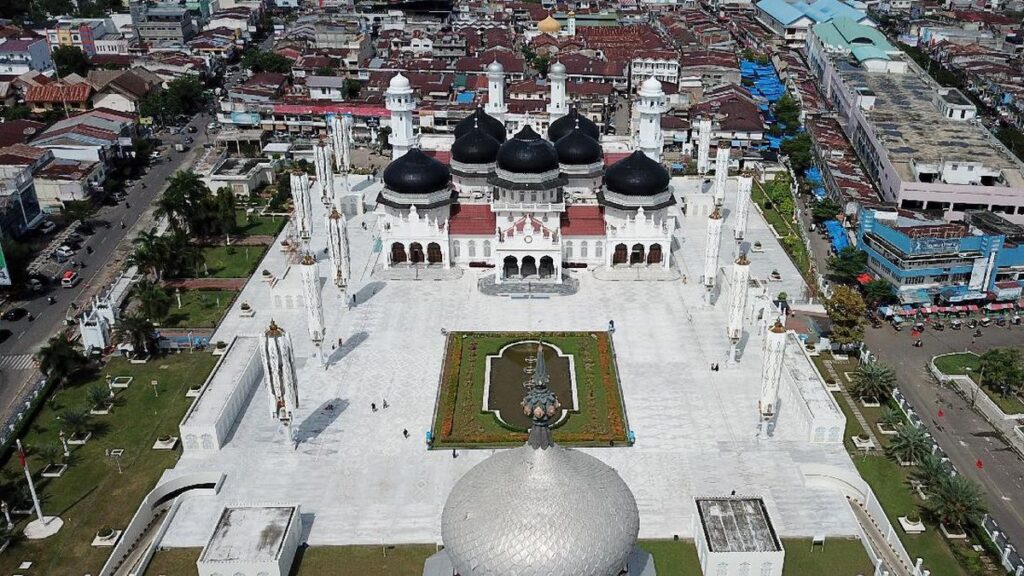
Aceh war or perang aceh was considered as one of the longest and bloodiest resistance movement against colonial rule in Southeast Asia. The fought between the Aceh Sultanate and the Dutch East Indies showcased resilience and determination of Acehnese people against foreign imperialism.
Despite superior weaponry and resources, the Dutch forces faced a hardship and struggle during their campaign in Aceh. The article will explain the origins, key battles, and the lasting legacy of the battle on the history of Indonesia and Southeast Asia.
Aceh Sultanate and the Roots of Conflict
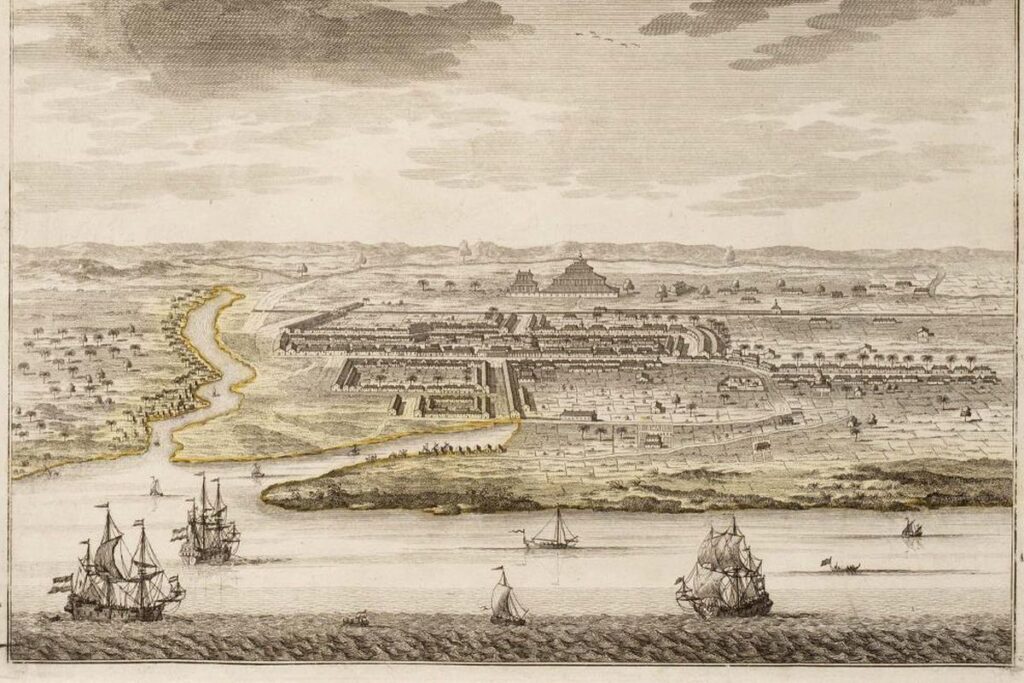
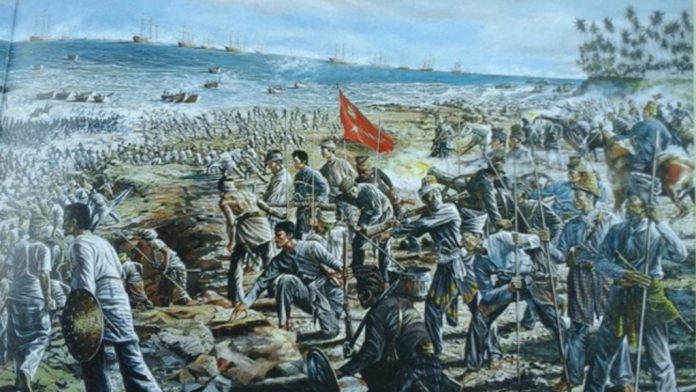
The Aceh sultanate located on the northern tip of Sumatra, possess a very strategic location near the strait of Malacca. The sultanate became very powerful with a strong islamic identity. It had been a major trading hub since the 16th century, engaging in trading between Ottoman empire, European countries, Arabia, India, China, and the Malay archipelago.
Furthermore, the Aceh sultanate maintained close ties with the Ottoman empire and played a vital role in spreading islam in Nusantara. During its peak in the 16th and 17th century, the Aceh sultanate competing with European powers in spice, gold, and pepper trading. The sultanate was also famous for its powerful navy, military resilience, and scholarly contribution in the region.
Treaty of London in 1824
In 1824, the Dutch and British signed an agreement known as the Treaty of London. This agreement divided the sphere of influence in Southeast Asia. The agreement clearly stated that the British recognized Dutch control over Sumatra and in exchange the Dutch withdrew their subjects from Malaya and India.
To justify their invasion in Aceh, the Dutch used treaty of London to expand their colonial influence. On the other hand, the Acehnese themselves rejected this idea and continued to see themselves as an independent Islamic state in the region.
Aceh War Introduction
The Aceh War unfolded in multiple stages between 1873 and 1914, lasting for decades and resulting in heavy casualties on both sides. Historians regard it as one of the longest and bloodiest colonial conflicts in Southeast Asia. While the war brought immense devastation to Aceh’s population and economy, it also left a lasting legacy, shaping both Acehnese and Indonesian pride in their resistance against colonial rule.
First Dutch Invasion to Aceh (April 1873)
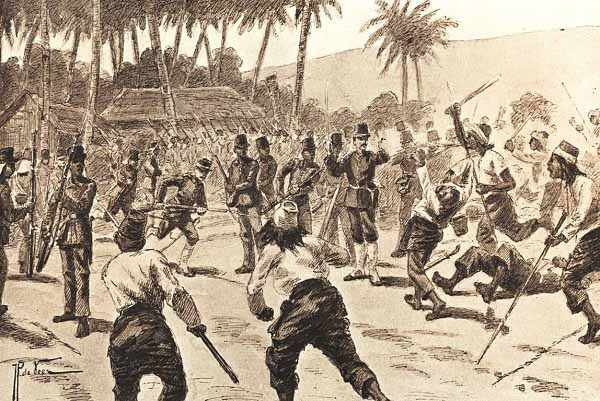
The Dutch launched their first expedition in April 1873 and resulted in a total failure. A force of 3,369 troops (mainly infantry), led by General Kohler, attempted to seize the sultan’s palace in Kutaradja (Banda Aceh) but was met with fierce resistance from the Acehnese led by Sultan Mahmud Syah.
The Dutch underestimated Aceh’s military capabilities, as the defenders skillfully used fortified position as their advantage, to inflict casualties to the invaders. The decisive moment came then the Dutch attempted to storm Baiturrahman Grand mosque and the Sultan’s Kraton (Royal palace).
The Acehnese warriors armed with firearms, rencong daggers, and spears to defend their territory around Kutaradja. The battle resulted in 45 Dutch soldiers killed, including General Kohler himself, and 406 wounded. The failure to capture the city forced the Dutch to retreat, marking a humiliating defeat.
Second Dutch Invasion ( December 1873-1874)
The second Dutch invasion led by General J Van Swieten with 13,000 troops under his command in December 1873. This time the Dutch utilized their intelligence and superior firepower, employing more artillery and naval bombardments to weaken Acehnese fortification around Kutaradja.
Within weeks, the Dutch successfully seized Kutaradja, forcing Sultan Mahmud Syah and his remaining forces to retreat. However, despite their strategic victory, the Acehnese continued their resistance through relentless guerrilla warfare in the rural regions of Aceh.
Guerrilla Warfare on the Dutch (1874-1896)


The Acehnese resistance adapted their strategies, where they shift from conventional warfare to prolonged guerrilla campaign that lasted over the next few decades. The persistent struggle made Aceh one of the most challenging territories for the Dutch to control.
The Acehnese avoid direct confrontation against the Dutch military, which possessed superior firepower and resources. Instead, they implemented guerrilla tactics to disrupt Dutch operation. Following strategies implemented consist of:
- Night raids: surprise attack on Dutch encampments and fortifications
- Ambushes and Hit-and-run tactic: some elite Acehnese warriors attacked the Dutch outpost and patrols before retreating into the dense jungles and mountains.
- Religious Mobilization: Many Acehnese religious leaders framed the resistance as holy war or jihad. This encouragement lead to widespread support and continued resistance.
During this era, several Acehnese leaders, warriors, and strategists rose to prominence and spearheaded the resistance against Dutch colonial forces. Notable figures such as Teuku Umar, Cut Nyak Dhien, and Teuku Chik di Tiro inflicted heavy casualties and significant losses on the Dutch. Their unwavering contributions to the Acehnese struggle for independence earned them the status of national heroes in Aceh and Indonesia following the nation’s independence.
The Remnants of the Resistance and Dutch Counterinsurgency (1896-1910)
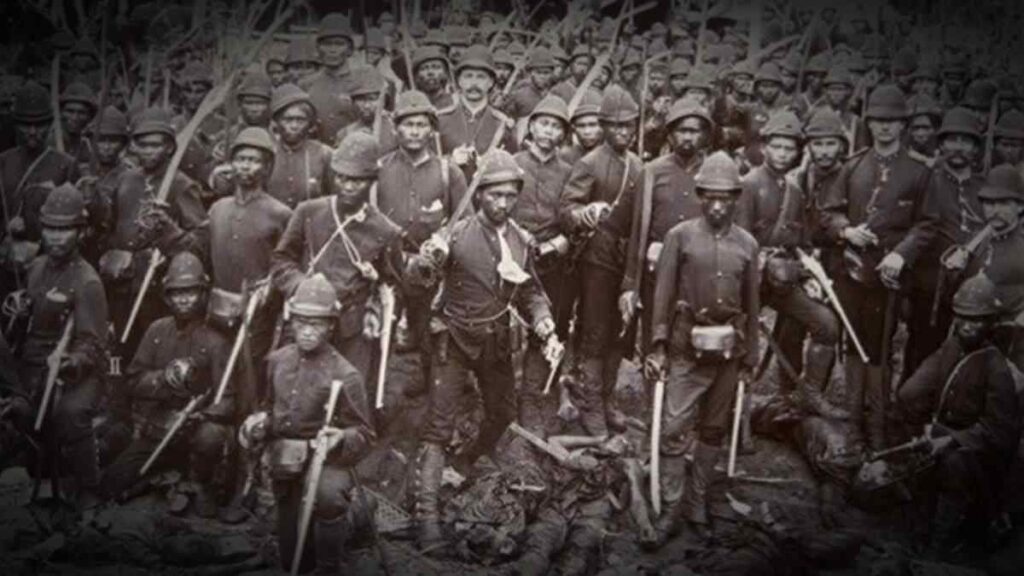
This period marked a significant phase in the long-running Aceh war and the resistance faced fierce counterinsurgency from the Dutch (Kitzen, 2016). Despite their failure to totally suppress the resistance, their grip on the region began to tighten.
Teuku Umar, one of the most famous resistance leader, initially worked with the Dutch, betray the Dutch in 1896. His knowledge on Dutch tactics and military infrastructure allowed the Acehnese to launched successful attacks agains the Dutch. However, his death in 1899 caused a massive blow to the Acehnese resistance.
On the other hand, the Dutch adopted different strategies like psychological warfare, scorched earth tactics, and divide-and-conquer strategies to break the will of the Acehnese resistance. The Dutch implemented systematic destruction of rural villages, seizing crops, and livestock to starve the resistance.
In addition to the tactics mentioned above, the Dutch employed a special force known as the Royal Dutch East Indies Army (KNIL). KNIL composed primarily of indigenous soldier from various region of Indonesian archipelago. These Dutch trained and equipped this local forces for jungle warfare, an essential skill given the dense, challenging terrain of Aceh.
The KNIL’s knowledge of local geography and the people provided the Dutch with a strategic advantage, allowing them to infiltrate resistant communities and launch surprise attacks on the Acehnese strongholds. This approach is highly effective in countering the Acehnese resistance, contributing significantly to the eventual suppression of the insurgency.
Aceh War’s Aftermath
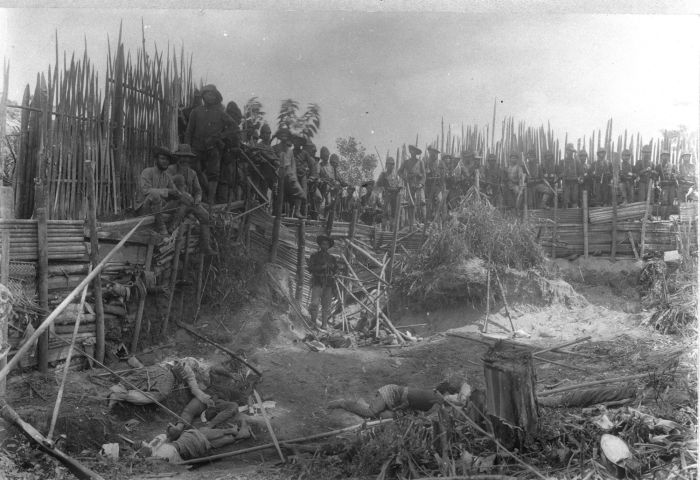
After more than 3 decades of fierce war, the region of Aceh was fully incorporated into the Dutch East Indies by 1914. The war devastated the Acehnese population with countless lives lost and massive displacement.
The Dutch left Acehnese economy in ruins due to the scorched earth tactics employed by the Dutch. Destruction of rural villages, crops and vital foo supplies makes it hard for the Acehnese to revive their economy after the war.
Furthermore, the Acehnese social and political structure was disrupted as the Dutch removed traditional leadership roles. In return, the Dutch replaced the local rulers with Dutch appointed officials. Despite these hardships, the Acehnese spirit remained unbroken and their struggle became a powerful symbol of resistance.
The legacy of Aceh war had significant impact on both Aceh and Indonesia, symbolizing resistance against colonialism. Some resistance leaders like Teuku Umar, Cut Nyak Dhien, and Teuku Chik di Tiro became a powerful source of national pride and inspired future Indonesian nationalists in their struggle for independence.
References
https://www.goodnewsfromindonesia.id/2024/01/22/sejarah-perang-aceh
https://maa.bandaacehkota.go.id/sejarah-aceh/
https://www.gramedia.com/literasi/latar-belakang-perang-Aceh/
Kitzen, M. W. M. (2016). The course of co-option: Co-option of local power-holders as a tool
for obtaining control over the population in counterinsurgency campaigns in weblike societies.
With case studies on Dutch experiences during the Aceh War (1873-c. 1912) and the
Uruzgan campaign (2006-2010).
